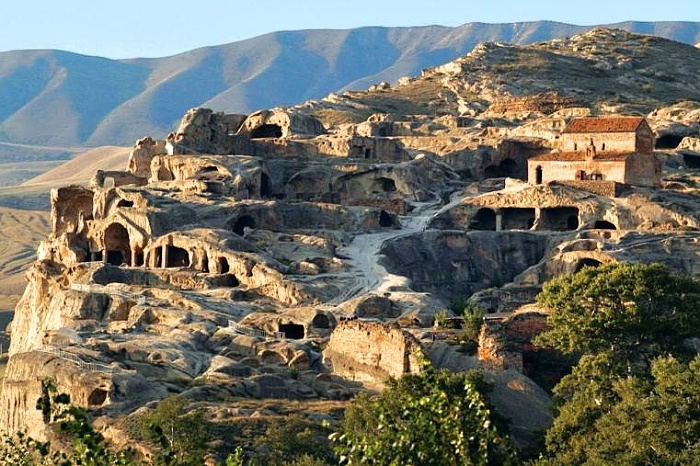
Uplistsikhe. The Fortress of God
1 Day
Dates: January-December 2019 | Duration: 8 days | Price: € 1200,--
The Great Silk Roads, that connected China with Mediterranean world, developed since 2nd century BC. Its main route went through Iran and Syria. At the same time there exist assumptions, arguing that several branches of this road crossed the territory of Georgia as well.
The Caucasian route gained importance in the 6th century after confrontation between Byzantium and Iran started – it became unprofitable to deliver silk to Byzantium and other Mediterranean countries via Iran both from economic and security reasons. Under such conditions the issue of the alternative route became very urgent. Central Asian merchants, that provided Byzantium with Chinese silk, tried to explore new route, namely the one going to the north from the Caspian Sea, crossed the Caucasus range (via Dariali gorge or other passes in the West Georgia) and proceeded to Byzantium via Georgia. It is known that the first caravan loaded with silk passed this route in 568.
Archeological excavations in the North Caucasus confirmed that in the late 6th century and the first half of the 7th century the significant part of the Chinese silk was delivered to Byzantium through Caucasus. The Caucasus branch of the Great Silk Roads was explored after the 7th century as well, even when Georgia was under Arab control. Lately, after the 14th century this branch of the Silk Roads lost its importance and the great caravan routes seized to traverse Caucasus.
The Georgian sector of the Silk Road passed across the territory of Svanetia. It went along the Kuban, the Teberda, the Inguri and the Rioni ending in Phasis (now Poti) — the ancient trade center, the former capital of legendary Colchis. In the valley of one of the Teberda inflows called the Uchkulan, the retaining wall of the Silk Road leading to the Nakhar pass has survived. Caravaneers went along the Greater Caucasus and after descending got in Mestia. Their further route went up again to the settlement of Ushguli and other villages which also had complexes of temples with towers. Then the road went through Low Svanetia to Kotatisium (now Kutaisi), and then along the Rioni river valley to Poti.
The Silk Road going across the North Caucasus was used by merchants until 1453. After the falling of Constantinople under the attacks of Ottoman Turks the silk trade froze. People started leaving those places, the temples were abandoned gradually. But the history has managed to save these surprising structures erected by ancient Georgian and Greek builders along the caravan routes of the Silk Road which crossed the North Caucasus.
Tour in preparation
.
Related Tours